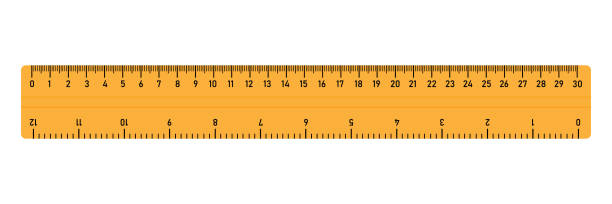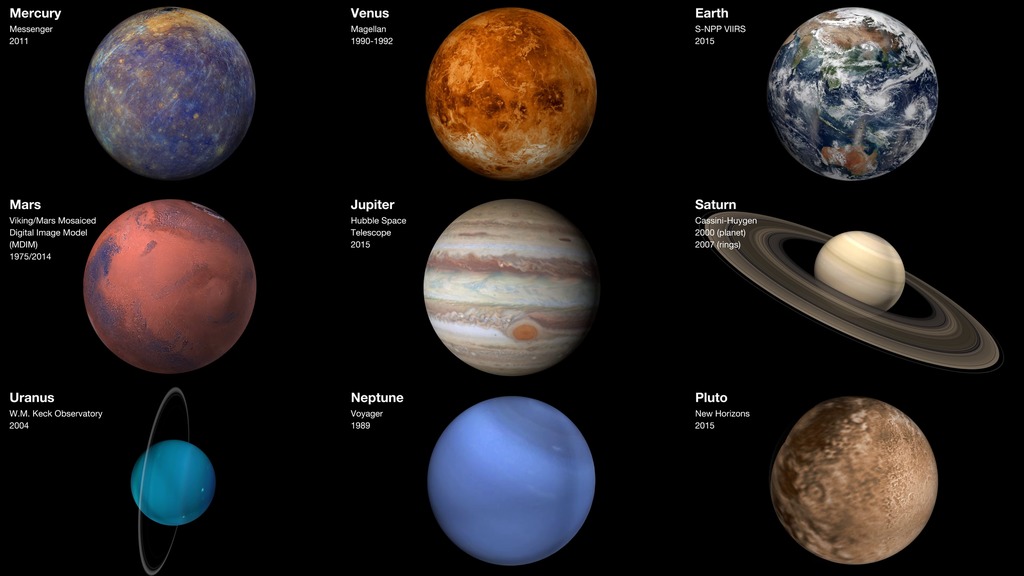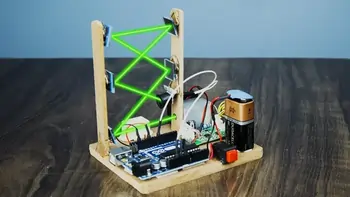vs
Inferences
What is the Scientific Method?
How we investigate the world around us.
What is a fact?
Something which can be proven and supported with evidence.
What is an observation?
What is a variable?
A factor that can be changed in an experiment.
What is a model?
A scaled representation of something else.
What is this?

A cm ruler.
What do you use to protect your eyes?
Goggles.
How many steps are there to the Scientific Method?
Seven steps
What is an opinion?
Something which cannot be proven and is often only partially supported by evidence.
What do you use to make observations?
Your eyes, your ears, your nose, your tongue and your skin.
3 different types.
What are models used for?
To show us how systems work and the different variables in them.
What is this?

A beaker
Where can you eat in a science class?
Out in the hallway.
Is the scientific method a linear process?
No, many steps can be repeated.
What types of words make something an opinion?
Descriptive words or general words like everyone, no one, always, never, etc.
What is an inference?
An assumption you make about something based on your observations.
What is a control varibale?
A variable that stays the same in an experiment.
How many types of models are there?
5 different types.
How much liquid is in this beaker?

About 120 ml.
What should you not do with chemicals?
Mix them.
Unless you know what they are and how they will react.
What does a hypothesis need to be complete?
It needs to be testable and phrased in an "if", "then" statement.
What things tend to make something more factual? Name three of them.
Numbers, names, photos, measurements, etc.
How do you tell the difference between an observation and an inference?
One is a fact and the other is an opinion made based on facts.
What is a dependent variable?
The variable which changes based on the independent variable.
Which model uses graphs, tables, charts and equations?
A mathematical model.
Which beaker is used for precise measurements?


A graduated cylinder.
Why should you not use the shower to put out a fire?
It is not as effective as a fire extinguisher.
What happens during the analysis step?
You collect and show data and observations from your experiments.
Is this statement a fact or an opinion?
"This building is big."
Why?
Opinion, it uses descriptive words and is based on perspective.
Is this an observation or an inference? Why?
"The lions look comfortable."
Inference because we are assuming how they feel.
What is the independent variable?
The variable a scientist changes in an experiment.
Which model requires data to be input into a simulation?
Computer model.
What button on a scale resets it to 0?
The tare button.
If you have to smell something, how should you smell it?
You should waft it toward your nose with your hand.
In which step do you create a lab report?
Share
Is this statement a fact or an opinion?
"Earth is the third planet from the sun."
Why?
It is a fact, it uses numbers, specific names and can be backed by evidence.
Is this an observation or an inference?
"New York City creates a lot of light."

Observation, the amount of light coming from the city is significant.
What is the dependent variable's other name?
The responsive or the measured variable.
What do you do during a mental model?
Create a picture in your head.
Where should you measure a beaker or a graduated cylinder?
At eye level.
Which tools is best used when something gets in your eyes?
The eye wash.
What are the three different ways we can show data and observations in a lab report?
Graphs, charts and tables.
Is this statement a fact?
"The diameter of the Earth is 5,000 miles long."
Is it an opinion?
It is not a fact but it is also not an opinion. It is a false fact.
The diameter of the Earth is 7,915.5 miles long.
Is this an observation or an inference?
"Earth is the planet with the most life on it."

Observation because we do not see life on any other planet.
What is the independent variable's other name?
The manipulated variable.
What type of model is in this picture?

Physical model
Name the three main types of safety equipment.
Goggles, gloves and lab coat.
Why does long hair need to be tied up?
So your hair does not get caught in or on anything.
What must you avoid at all times during the scientific process? Especially during the analysis and conclusion stages?
Opinions, we only want facts.
Why do we value facts more than opinions even though opinions are valuable?
Facts can be supported by evidence and we only want things supported by evidence.
Is this an observation or an inference?
"The tree on the right is taller than the tree on the left."

Inference. You can see the tree on the left is taller in the picture but we do not know if they are next to each other or not.
Stephanie was testing if salt water takes longer to boil than regular water. She placed 2 cups of water in pots of the same size. One pot got half a cup of salt and the other got none. She put them both on high heat for 15 minutes.
The salt.
Which model would be best suited to help you write a paper in English class?
Why?
A conceptual model.
You are trying to relate to a book so you are connecting what you know to what you learned in the book.
Which tools would be most useful for this task?
"I know I need about 20 grams of water."
How would you measure the water?
You would need a regular beaker and a scale.
You would place the beaker on the scale and hit the tare button, then you would pour the water in.
What does the term PASS stand for?
Pull, Aim, Squeeze, Sweep